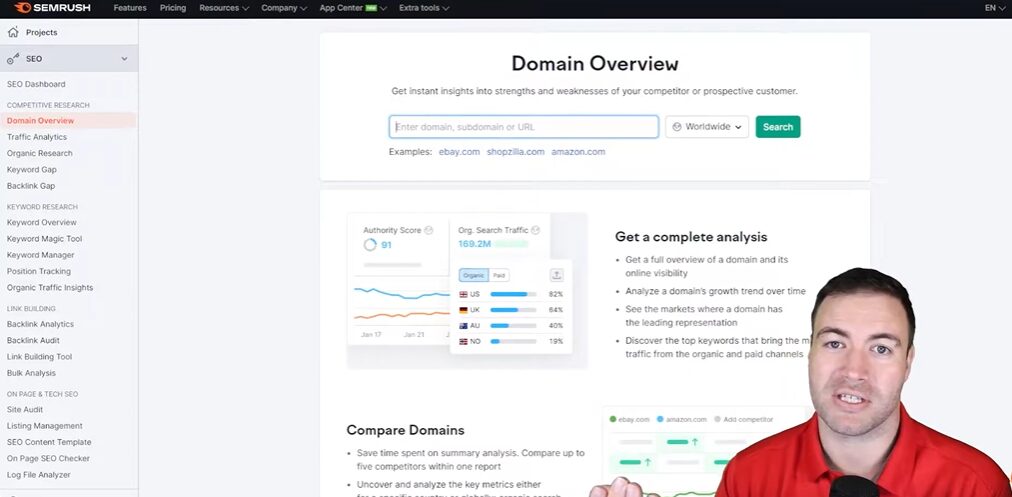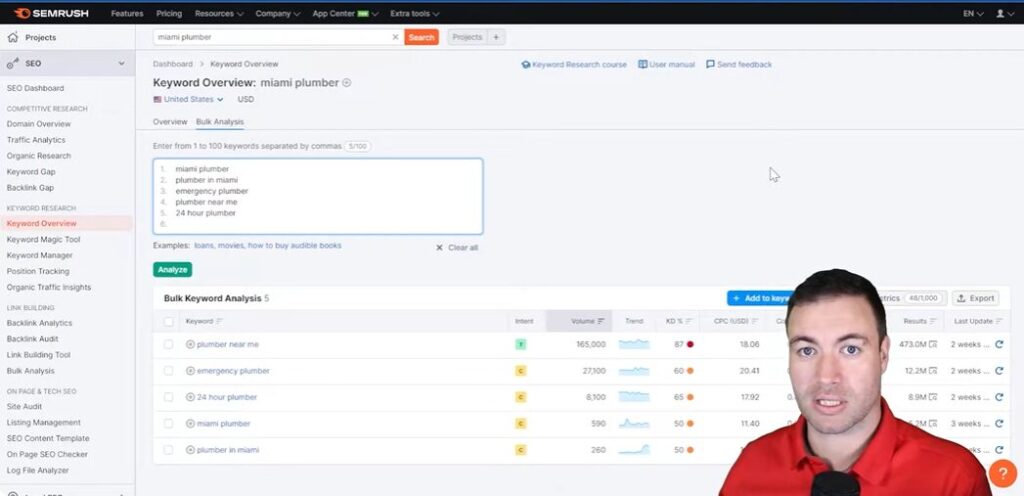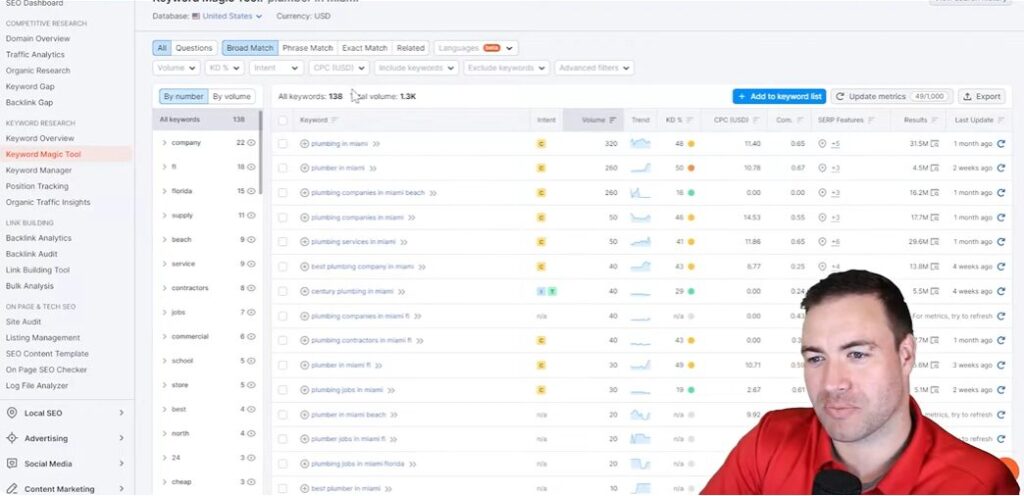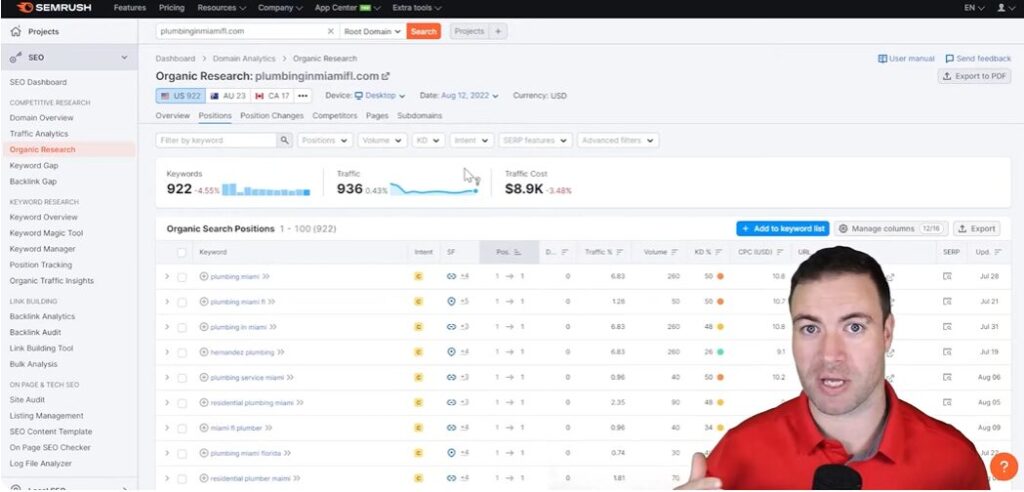When I first started my journey in digital marketing, the concept of keyword research seemed intimidating. It felt like decoding some ancient script. However, as I delved deeper, I discovered that keyword research isn't merely about tracking numbers; it’s about understanding people's intentions and connecting with them through compelling content. This epiphany transformed my approach to SEO, and I’m excited to share what I’ve learned about how to do keyword research along the way.
TL;DR: Keyword research is essential for driving organic traffic. Understanding intent, using effective tools, and analyzing competitors are crucial steps that I elaborate on in this post. Whether creating blog posts or optimizing a local business's online presence, mastering keyword research can boost visibility and success.
Table of Contents
The Essence Of Keyword Research: More Than Just Numbers
You might think keyword research is simply crunching numbers or finding the most searched terms. But it's much more than that. I learned this from a guide by Ron from Osborne Digital Marketing. Understanding user intent is absolutely crucial. Without it, we're just shooting in the dark.
1. Understanding User Intent
What does a user really want? Are they looking for information, or are they ready to make a purchase? This distinction can change everything.
For instance, if I create content titled "Top Five Cameras for YouTube", I may miss out on local sales opportunities. Instead, focusing on the keyword "buy a Canon Mark II camera" might drive more conversions. This insight marks a turning point in my content strategy. As Wren aptly put it, recognizing keyword intent influences the success of my content marketing efforts.
2. Different Types Of Keywords
It's essential to realize that different keywords serve different purposes. Here’s a quick breakdown of types for better understanding:
- Informational Keywords: Users seeking knowledge, like "what is SEO?"
- Navigational Keywords: Users searching for a specific site, for example, “Facebook login”.
- Transactional Keywords: Users ready to buy, such as "buy running shoes online".
By recognizing these categories, I can tailor my content more effectively. This leads to better engagement and ultimately, more clicks or purchases.
3. The Power Of Local Keywords
Narrowing the focus on local terms can be more beneficial, especially for service-based businesses like mine. If I’m starting a plumbing business in Miami, I should use local keywords like "plumber in Miami" or "emergency plumber Miami". These targeted keywords help attract people in my area looking for immediate services.
I was guided to brainstorm seed keywords relevant to my niche. They are simple but effective. For instance, terms like "Miami plumber" can open up many doors. Tools like SEMrush or SEO Stack help evaluate concepts like search volume and keyword difficulty.
As I explored the data from my research, I found striking insights. Keywords like "24-hour plumber" showed up as alternatives that might carry less competition but still draw in local clients actively searching for services. It's a game changer!
In my ongoing journey of refining my strategies, I find that keeping organized notes in a spreadsheet helps tremendously. This way, I can easily track high-potential keywords and reassess my focus as needed.
Keyword research isn’t a one-off task. It’s an ongoing process of adaptation, analysis, and growth. Every step matters, and every keyword can lead to new opportunities.
Exploring Tools For Effective Keyword Research

Keyword research is a crucial step in making sure your content hits the target. It’s like hunting for treasure in a sea of information. Which tools should we use to ensure we dive deep enough? Let’s explore.
1. Comprehensive Data With SEO Stack And SEMrush
First, I’ve found that tools like SEO Stack and SEMrush can provide comprehensive data. These platforms not only reveal keyword volume but also difficulty levels and cost-per-click rates. For instance, if I'm looking up “plumber in Miami,” SEMrush tells me it gets around 260 monthly searches. Its difficulty score might be 50, which tells us it’s competitive. But isn't a little competition a sign of value?
Tracking these metrics helps me determine whether to pursue a keyword or look for alternatives. Using spreadsheets can help organize this data, making the analysis smoother and clearer.
2. Utilizing Free Tools Effectively
Sometimes, paid tools aren't feasible. That’s when free tools come into play! I often turn to resources like Google Keyword Planner or Ubersuggest. While these may not be as detailed, they still offer valuable insights. I enter phrases, such as “best gym shirts,” and watch the suggestions roll in. Each related question can spark ideas for blog posts or articles. Their power lies in giving us ideas that align with what actual users type into search bars.
- Focus on your niche with seed keywords.
- Track variations and related keywords.
- Employ local terms for targeted reach.
3. Pairing Data With Local Insights
Analyzing data is one side, but what about pairing it with local insights? If I’m running a plumbing service, I want terms like “emergency plumber in Miami” rather than just the generic “plumber.” It allows me to cater directly to what local clients are hunting down.
Don’t forget! Search intent matters. If someone searches “how to unclog a drain,” they might just want instructions. I can create content around this topic to cater to their needs.
In sum, gathering keyword insights is not just about numbers. We need to ask ourselves: How can this data catapult us ahead in our field? By employing a mix of advanced and free tools, and weaving in local knowledge, we set ourselves up for success. Keyword research truly is the bedrock of our content strategy.
So, are we ready to dig deeper? Let’s get to work!
Seed Keywords: The Starting Point For Every Campaign

When diving into the world of SEO, understanding seed keywords is crucial. Seed keywords are the foundation of our keyword research. They are the fundamental terms directly related to our niche. To define them, we first need to think about what describes our services or products best. For instance, if I were starting a plumbing business in Miami, I’d brainstorm terms like:
- Miami plumber
- Plumber in Miami
- Emergency plumber
Brainstorming Variations
Once I have my seed keywords, the next step involves gathering various term variations. This is essential because different customers may use different phrases to search for the same service. For example, other potential terms might include:
- 24-hour plumber
- Best plumber in Miami
- Plumbing services Miami
Using tools like SEMrush or SEO Stack can help to identify search volume and competition for these variations. This data shows can help us understand if a keyword is worth pursuing.
Learning From The Competition
Another primary step in keyword research is to look at our competitors. What keywords do they rank for? This can provide us with enlightening insights. Here’s how I do it:
- Search the chosen keywords on Google.
- Examine the top-ranking websites that appear.
- Analyze their content: What keywords are they using? How are they presenting their information?
By studying our competition, we can discover keywords they haven’t fully tapped into. Suppose I notice a competitor gets considerable traffic from keywords like “plumber tools” or “plumbing maintenance tips.” I might pivot my content to cover these topics, which lets me target an audience that’s less saturated.
Ultimately, the beauty of keyword research is in its depth. I’ve learned that it’s not only about picking the right seed keywords. It’s about adapting to trends, learning from successes, and continuously fine-tuning our approach. With diligence, we can set a solid SEO foundation for our campaigns.
Decoding Keyword Intent: Understanding User Behavior

When we talk about keyword intent, we're diving deep into what users are actually searching for. Understanding this can transform how we approach content creation. It means we need to differentiate between informational, navigational, and transactional intent.
1. Informational Intent
This is the most common type of search intent. Users with informational intent are looking for answers, tips, or general knowledge. Think of someone searching "How to fix a leaking faucet." They're not ready to hire a plumber; they want to solve the problem themselves. What can we do? We can create detailed guides or informative blog posts that answer common questions.
2. Navigational Intent
Next, we have navigational intent. Here, users are looking for a specific website or page. For example, someone searching for "Facebook login" is not looking for information about Facebook; they want to access their account. To cater to this, ensure your business name and branding are clear and easy to find.
3. Transactional Intent
Lastly, there’s transactional intent. This is when users are ready to buy. They might search for "buy Nike running shoes" or "best pizza delivery near me." For these types of searches, we can optimize our product pages or service listings to make the purchasing process as seamless as possible.
What Are Users Really Looking For
It's essential to analyze what users are truly after. To do this effectively, we can:
- Use SEO tools to gather insights on search volume and competition.
- Conduct surveys or gather feedback to understand pain points.
- Pay attention to trending topics in your niche.
Using Insights To Tailor Content
Once we grasp the different types of intent and what users are seeking, we can fine-tune our content accordingly. For example, if I notice that more people are searching for "how to fix a shower head," I might create a blog post focused on that topic. With every piece of content, I strive to meet the users right where they are in their search journey.
Ultimately, our goal is to bridge the gap between user intent and our content strategy. By understanding the motives behind searches, we can not only improve our visibility but also offer real value to our audience. This approach makes a real difference in how our content performs. We’re not just creating; we’re connecting.
Analyzing Your Competitors' Keywords

When exploring into the world of SEO, I quickly realized how crucial it is to analyze my competitors' keywords. This is an important factor on how to do keyword research. But how do I go about this? Here’s my step-by-step approach that has helped me tremendously.
1. Check What Keywords Competitors Rank For
The first step is finding out what keywords my competitors are targeting. I often use SEO tools like SEMrush or Ahrefs. These tools help me discover which keywords drive traffic to their sites. For example, if I'm considering a plumbing business, I’d look up keywords like “emergency plumber in Miami”.
What did I find? My competitors might be ranking for keywords that I haven't even thought about. The more I research, the more opportunities become apparent.
2. Look For Gaps In Their Strategy
Once I identify the keywords competing businesses are targeting, the next step involves looking for keyword gaps. Are there keywords that they seem to ignore? Perhaps they don’t focus on local search terms where I see potential.
“If I note that a competitor is receiving significant traffic from specific keywords, I can pivot my efforts to target keywords they haven’t capitalized on effectively.”
Finding these gaps is like stumbling onto a treasure map. It gives me a chance to cater to an underserved audience. For instance, if no one is writing about "eco-friendly plumbing options," I could generate content that fills that void. Think about it: what questions do your competitors dodge?
3. Adapt Successful Techniques To Your Brand
After noting the gaps, I like to borrow successful techniques from my competitors. However, it’s key to always adapt them to fit my unique brand identity.
- Content style: Do they prefer detailed guides or quick tips? I can adopt the structure that seems to engage visitors most.
- Keywords: If a competitor focuses on “emergency services for plumbing,” I might shift slightly to “24/7 plumbing services” to make my content distinctive.
- Call-to-action: What does their CTA look like? If I see a clear path to conversion, I want to model that in my approach.
By merging my insights with what others are doing well, I can craft a keyword strategy that is both competitive and original.
Engaging in this analysis not only makes my content more visible but also helps me become a go-to resource in my niche. I’ve learned that ongoing keyword research is essential, requiring regular tune-ups to stay aligned with current trends and competition.
Putting It All Together: Creating A Keyword Research Spreadsheet

When it comes to keyword research for your website, organization is key. I’ve found that creating a keyword research spreadsheet can seriously simplify the entire process. It not only helps to keep my thoughts in line but also provides a clear structure. So how do I actually set this up?
1. Organizing Keywords Into A Clear Structure
First, I start by jotting down seed keywords relevant to my niche. Let’s say I’m diving into plumbing services. I’ll note down terms like:
- Miami plumber
- Emergency plumber
- Plumbing repair in Miami
Once those seed keywords are in place, I arrange them in my spreadsheet. I create separate columns for search volume, competition score, and intent. This way, I can see the full picture at a glance.
2. Tracking Keyword Performance Over Time
Next, I actively monitor how these keywords perform over time. After all, just because a keyword shows promise initially doesn't mean it will continue to do so. I update my spreadsheet regularly with metrics on:
- Rank position
- Traffic generated
- Conversion rates
This tracking helps me spot trends or shifts in keyword performance. For example, if I notice that “emergency plumber” is declining in monthly searches, I can make adjustments. Am I better off focusing on a rising keyword instead?
3. Adapt Based On Metrics
Now, here comes the exciting part: adapting my strategy. I never set my keywords in stone. As I analyze the data, I ask myself:
What are the patterns showing?
Is there a new trend I should pay attention to? By evaluating performance, I can pivot my focus as needed. For example, if “24-hour plumber” starts gaining traction, it’s time to shift some resources towards that keyword.
Adapting based on metrics allows me to fine-tune my strategy. I avoid chasing irrelevant keywords while maximizing traffic and conversions. By staying flexible and attuned to the data, I sharpen my SEO efforts for better results.
In this journey, I've learned that a keyword research spreadsheet isn’t just a tool; it’s a comprehensive map guiding me through the vast landscape of SEO. With organized data, consistent tracking, and a willingness to adapt, I feel empowered to make informed decisions that can enhance my online presence.
Conclusion: Embracing The Journey Of Keyword Research
As I wrap up this journey on how to do keyword research, I can’t help but reflect on the lessons learned and the ongoing nature of this endeavor. Keyword research isn’t just a task I tick off a checklist. It’s an evolving journey that demands my attention and adaptability.
Remain Flexible In Your Approach
Being flexible is crucial. The digital landscape and user behavior are always changing. I’ve found that what works today may not work tomorrow. For example, a keyword I selected based on research might surge in competition or become less relevant. It’s like surfing a wave - sometimes I need to ride the crest, and at other times, I must paddle back out, recalibrating for a new wave. How can I stay ahead of the curve? By continuously reassessing my strategy and embracing change.
Continue To Learn and Adapt Strategies
Learning never stops in the world of SEO. I’ve appreciated the value of using SEO tools and resources to keep my knowledge fresh. Every search I conduct and every article I read enhances my understanding of keyword intent. I ask myself: what are customers really searching for? Once I recognize this intent, adapting my strategies is much easier. I’m always reading about new trends and techniques to refresh my approach. The SEO world is dynamic, which means my strategies need to be, too.
Celebrate Small Victories
Finally, I’ve learned to celebrate the small victories. Increased keyword rankings, even if slight, signal progress. Each small win fuels my motivation. It’s like training for a marathon - every step forward counts. When I see my keyword rankings improve, I recognize it as one more piece of the puzzle fitting into place, bringing me closer to my larger goal of online visibility and customer engagement.
In conclusion, my journey through keyword research highlights the importance of remaining flexible, continually learning, and appreciating the little victories. This is not a solitary sprint but rather a marathon - a continual process that will evolve over time. Staying diligent in keyword research and adapting my strategies will pave the way for ongoing success in the vast world of digital marketing. Embracing the journey is where I find the greatest rewards.




